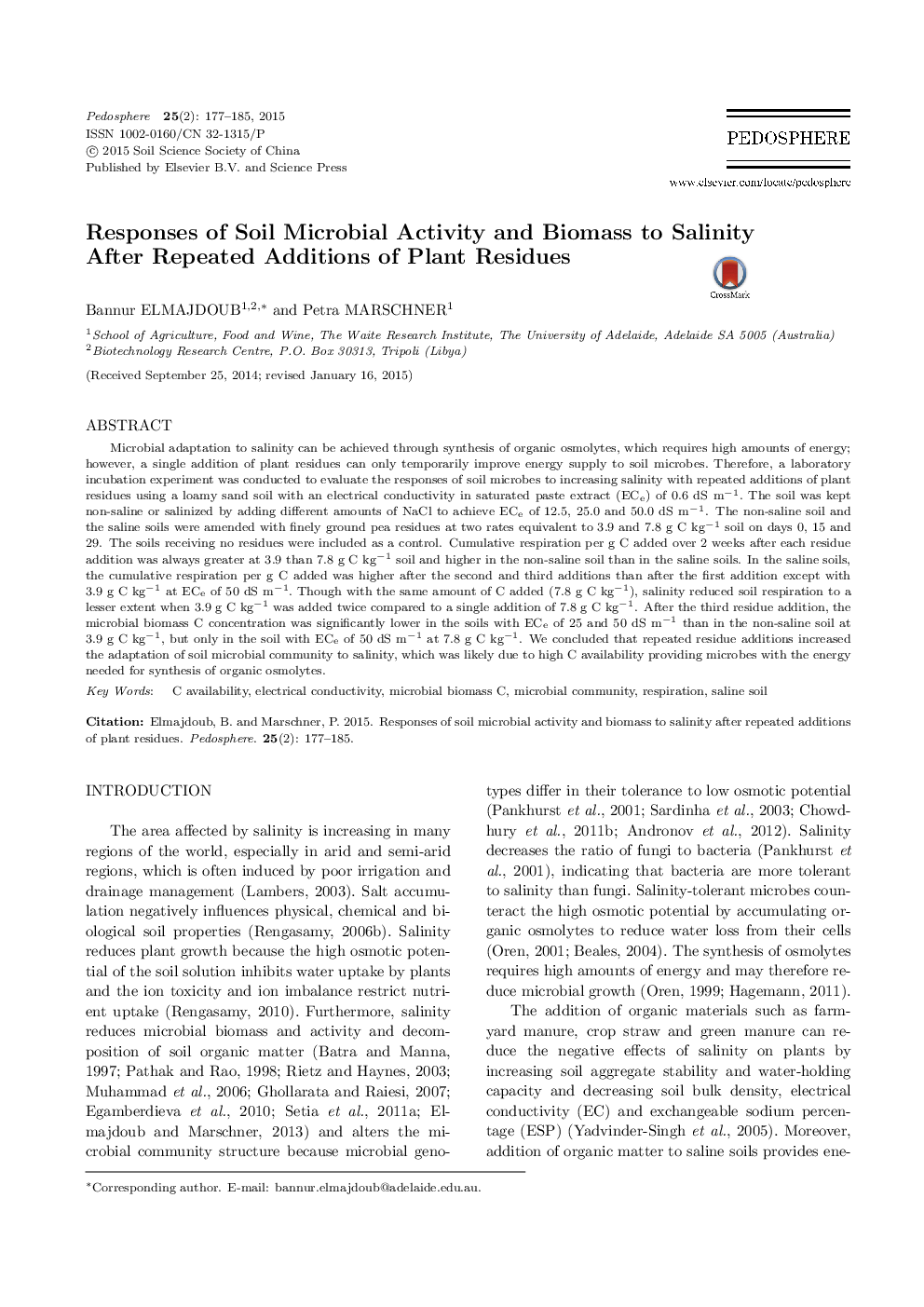| Article ID | Journal | Published Year | Pages | File Type |
|---|---|---|---|---|
| 4581178 | Pedosphere | 2015 | 9 Pages |
Microbial adaptation to salinity can be achieved through synthesis of organic osmolytes, which requires high amounts of energy; however, a single addition of plant residues can only temporarily improve energy supply to soil microbes. Therefore, a laboratory incubation experiment was conducted to evaluate the responses of soil microbes to increasing salinity with repeated additions of plant residues using a loamy sand soil with an electrical conductivity in saturated paste extract (ECe) of 0.6 dS m−1. The soil was kept non-saline or salinized by adding different amounts of NaCl to achieve ECe of 12.5, 25.0 and 50.0 dS m−1. The non-saline soil and the saline soils were amended with finely ground pea residues at two rates equivalent to 3.9 and 7.8 g C kg−1 soil on days 0, 15 and 29. The soils receiving no residues were included as a control. Cumulative respiration per g C added over 2 weeks after each residue addition was always greater at 3.9 than 7.8 g C kg−1 soil and higher in the non-saline soil than in the saline soils. In the saline soils, the cumulative respiration per g C added was higher after the second and third additions than after the first addition except with 3.9 g C kg−1 at ECe of 50 dS m−1. Though with the same amount of C added (7.8 g C kg−1), salinity reduced soil respiration to a lesser extent when 3.9 g C kg−1 was added twice compared to a single addition of 7.8 g C kg−1. After the third residue addition, the microbial biomass C concentration was significantly lower in the soils with ECe of 25 and 50 dS m−1 than in the non-saline soil at 3.9 g C kg−1, but only in the soil with ECe of 50 dS m−1 at 7.8 g C kg−1. We concluded that repeated residue additions increased the adaptation of soil microbial community to salinity, which was likely due to high C availability providing microbes with the energy needed for synthesis of organic osmolytes.
